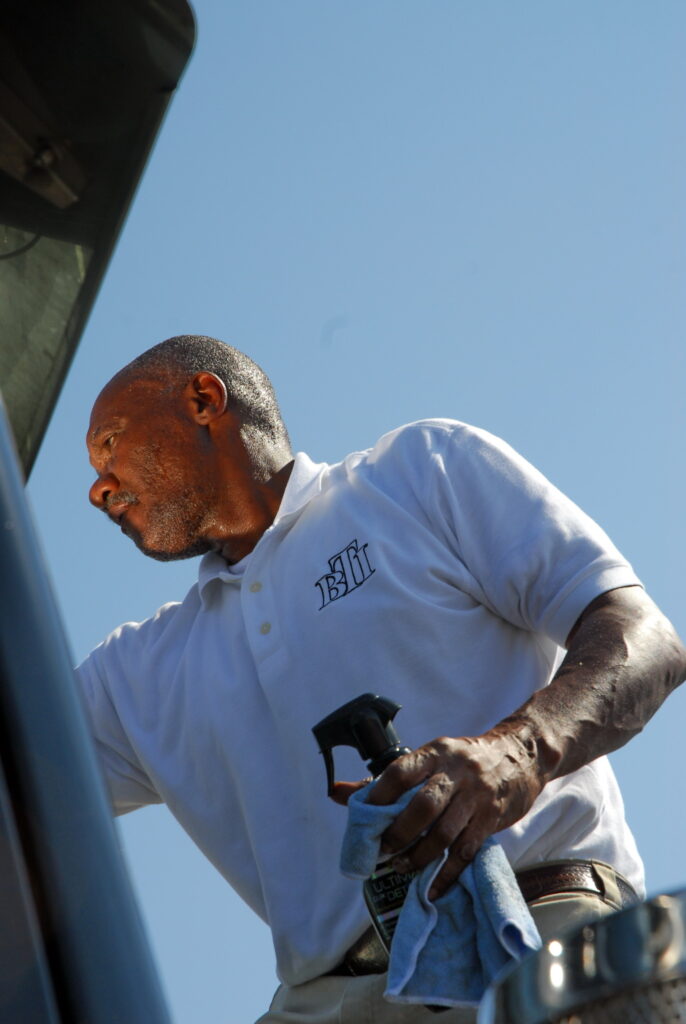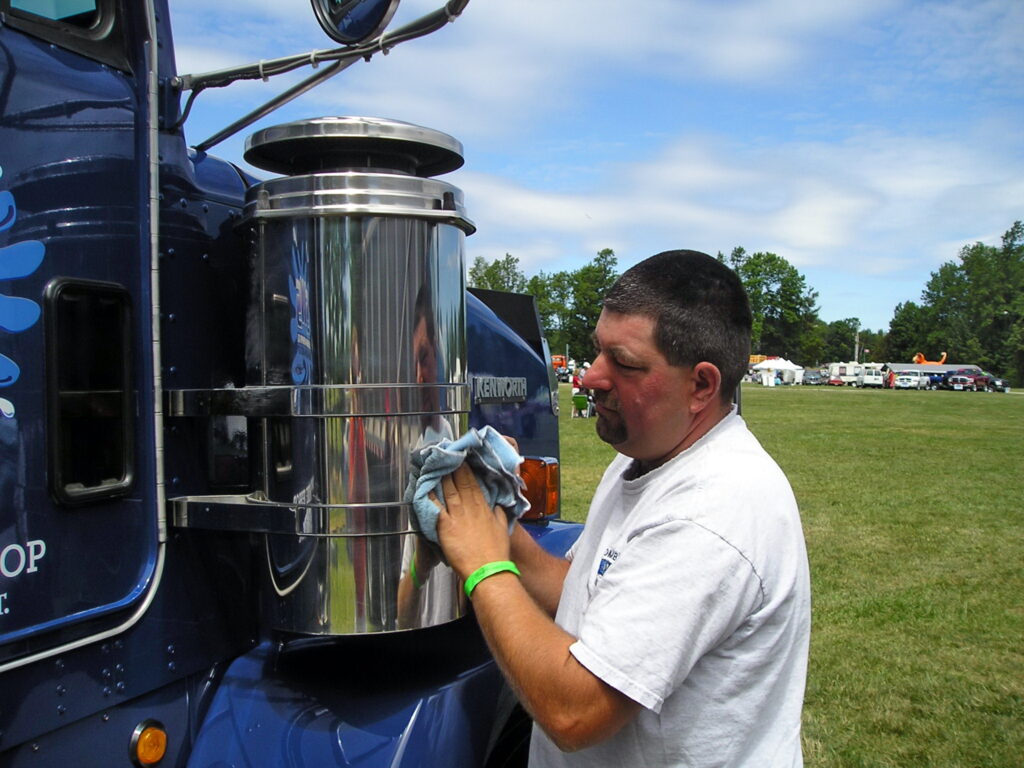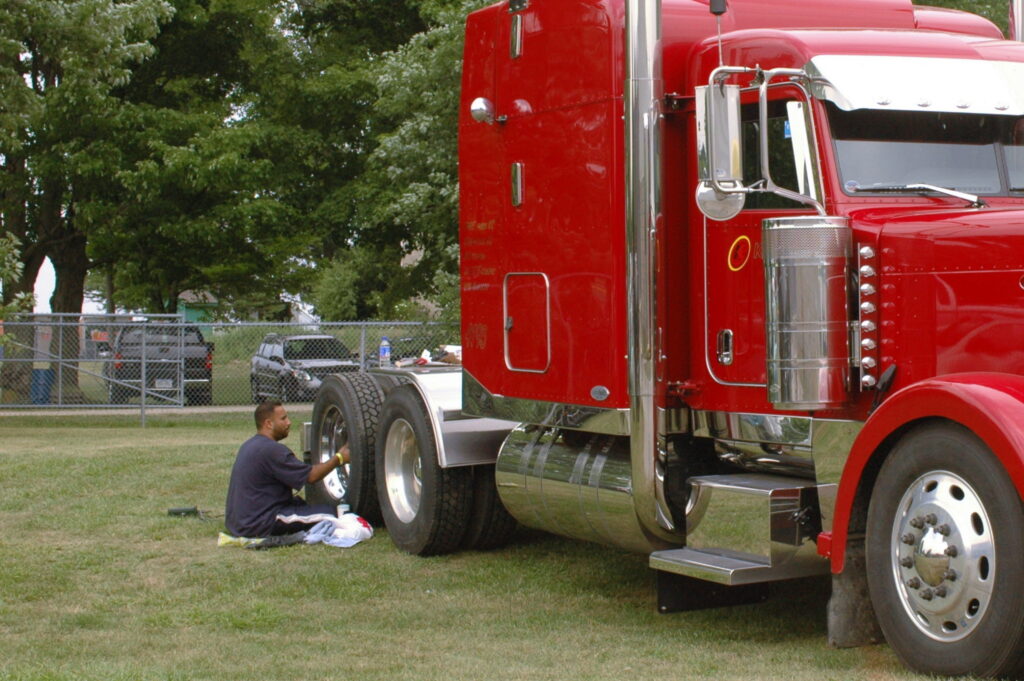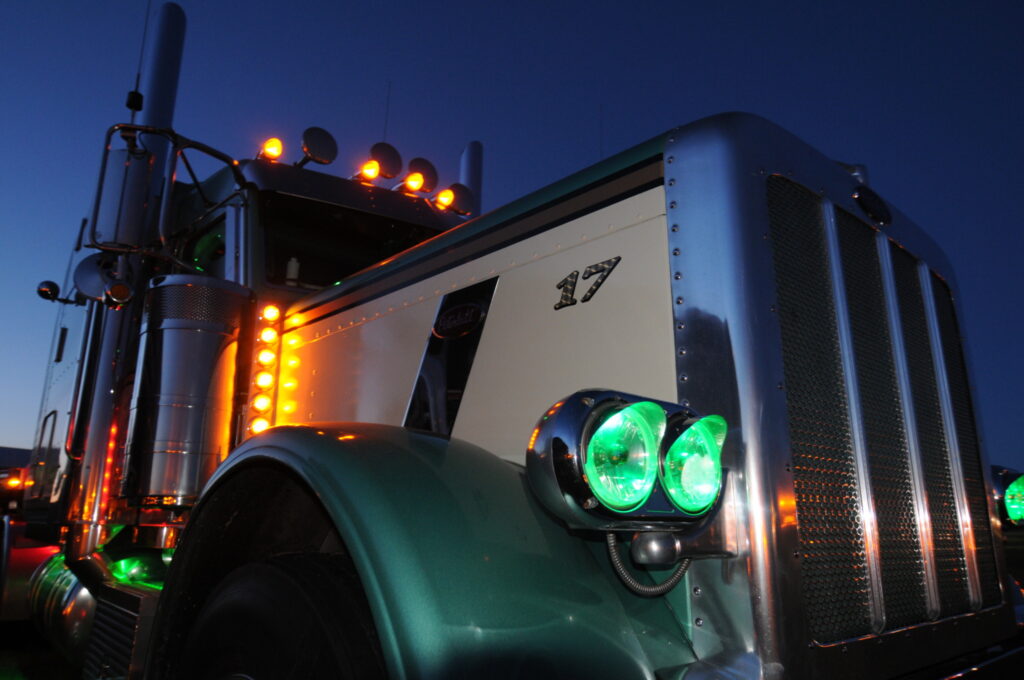How to keep that showroom shine: Driver’s Education
You never get a second chance to make a good first impression. In life, we are constantly judged by our appearance. In trucking life, appearance is judged at the scales, by customers and in some cases by clipboard-wielding, white-gloved judges. Whether you’re into showing your truck or just keeping it clean and presentable to avoid any mistaken first impressions at an inspection station, keeping the thing clean is usually worth the effort.
We have all seen those trucks with years of caked-on road spray or telltale streaks of dirt stuck to the fuel tanks where a bit of diesel has dribbled out. What does that say to you about that company? About that driver? Sure, washing the truck is an expense, but you’d have to admit that spending $50 to $100 a few times a year probably isn’t going to bankrupt the company.

The spring wash is most important wash of the year. That’s when you spend a little extra time and money to rid your ride of the worst the previous winter threw at it. Salt, brown stains from the road sand, and of course all those corrosive de-icing chemicals they use these days.
That stuff is designed to adhere to pavement; it adheres equally well to trucks. And, it tends to seep into the deepest and darkest spots on the chassis where it eats away at stuff like electrical wiring, brake linings, anything made of aluminum, and the sensors on your aftertreatment system.
Rob Sommerville, the general manager of the Blue Beacon Truck Wash in Woodstock, Ont., says those chemicals are extremely hard on the equipment.
“I’ve seen brand new, $200,000 trucks showing signs of pitting and corrosion after just their first winter,” he says. “You can’t see any residue of the chemical, but you can sure see the circular pitting marks it leaves behind.”
Some commercial truck washes offer special undercarriage washes dedicated to removing as much of that corrosive material as possible. Getting beneath the truck with a power-wash wand can be awkward, so some locations offer an upward-directed spray pattern. An undercarriage wash is also a great way of flushing out the winter sand and grit from your u-joints, steering linkages and brake parts.
Depending on the location, various truck washes use an assortment tools to get your truck looking its best. Some use only high-pressure wands with a soap formula, followed by a clean water rinse. Some use a combination of high-pressure soap and water along with brushes and wash mitts for the delicate parts, while others do the whole job by hand.
Naturally, you’ll pay more for a hand-wash and any of the special treatments, such as an application of degreaser for the engine or the undercarriage. In Canada, Sommerville says the going rate for a high-pressure soap and water wash for a tractor and a dry van trailer is just over $100 with tax. But that is a business expense for owner-operators, and thus deductible.
He says, half-jokingly, drivers should wash their trucks a couple of times a week. “But seriously, once you’ve got the truck clean, a wash every couple of weeks will help keep it that way. And it’s easier to keep it clean than an initial deep cleaning can be.”

Driveway washes
If you plan to tackle the challenge at home using a brush or a wash-mitt, be aware that grit from some other parts of the truck can scratch the paint or the metal work if you get too aggressive.
The mixture of the soap and water is important. Too strong a blend can damage the bright work, while too lean a mixture might prompt you to brush too hard or get a bit too close to the paint with the high-pressure wash wand – if you have one.
Most of the cleaning products sold at automotive stores are fine for trucks. There are a variety of products to choose from, including pre-soak products for removing bugs and road film before the wash. There’s tire cleaner, formulated to clean and blacken the rubber, and there are a few compounds promoted as brighteners for the chrome and metal work.
Another word of caution here: some commercially available cleaning products can be too harsh for automotive finishes, especially degreasers and chrome or aluminum cleaners. They’re usually acid- or caustic-based, and can stain the metal badly if they’re left on too long or not mixed properly.
When it comes to the fine detail, nothing beats a wash mitt and a diligent washer. Using high-pressure soap and water may take the dirt off, but it’s helpful to add a little elbow grease to the effort to make the surface shine. Metal in particular can benefit from a good scrub, and when the wash is done by hand, up close and personal, there’s less risk of damage caused by the swing of a long-handled brush.
And if you’re a real keener, don’t forget to dry the truck after the wash. If it’s not properly rinsed afterward, you might end up with disappointing streaks or dried soap marks on the paint.
If you plan to perform a serious degreasing at home, it’s best to begin with a scraper to remove the larger blobs of the stuff, especially from under the fifth wheel and along the driveshaft before applying a citrus-based degreaser to the dirty areas. You can leave the degreaser on overnight for a really effective clean-up. Avoid getting the degreaser into the grease zerks or the cups covering the ball joints. You don’t want to remove grease from those areas.
And when using such chemicals, be mindful of the local environmental regulations regarding sewage. Don’t allow fuel or oil to run into the storm drains; pick up the grease gobs and dispose of them of properly. By the way, some of the pros use a biodegradable degreaser called Citra Clean, if you’re really concerned about your environmental footprint.
For personal protection, wear gloves, at least, when handling corrosive cleaning chemicals and wear eye protection when spraying cleaning products around with a pressure washer.

The tough jobs
If the truck has gone a couple of seasons without much TLC, as was the case this year with many of last summer’s truck shows cancelled because of the pandemic, you may have to break out the heavy artillery – buffers, pads, and sticks of jeweller’s rouge or some other iron oxide-derivative cutting compounds that cut away at the oxidized surface of the metal.
These come in a dizzying variety of colors all with varying degrees of greasiness or abrasiveness, says Randy Camden, a freelance truck polisher who works the Stars & Stripes Truck Show and Shine at the Mid-America Trucking Show in Louisville, Ky.
“If the aluminum surfaces are badly scratched, you can wet-sand the surface to restore the finish, and then go at it with the jeweler’s rouge,” he says. “The lighter colored compounds are greasier and have more of a cut it while the drier compounds tend to be darker in color and are used for polishing and finishing the surface.”
Be aware of what you’re getting into before going at the aluminum. Camden says a good job can take anywhere from six to 20 polisher-hours – just on the aluminum.
“Aluminum is easy to work with because it’s so soft. It polishes up nicely, but stainless steel is another story,” he adds.
Stainless is extremely hard, so it’s difficult to polish. Polishing metal is really just removing a tiny bit of material from the surface, then smoothing it out. Stainless steel is so hard it doesn’t polish well, Camden says. “It’s an extremely durable material and looks great when it’s new, but it fades as it gets pitted. And there’s not much you can do once it starts to go.”

The other danger with stainless steel is that it will turn blue if you burn it with the buffing or cutting wheels. “Don’t try to push it too far.”
Unlike stainless steel and aluminum, your chrome bits are quite resistant to oxidation. Giving it a good scrub with soap and solvents – using immaculately clean, soft cloths – should suffice to uncover the chrome’s natural shine.
And finally, Joel Simpson, the owner of Never Enough Chrome in Ashburn, Ont., has a tip for cleaning those darned diamond-plate or checker-plate aluminum panels. He recommends using a small piece of short-pile carpet. “Cut a piece about three or four inches square, apply some polish to the surface and then work at it with the carpet,” he says. “You won’t get that build-up of polish at the base of the raised bits of the checker plate. It’s way less frustrating than using a polishing wheel on those surfaces.”
Keeping a truck in shipshape takes some elbow grease, but for those who care about their image and take some pride in what they do for a living, it’s worth the effort.
Have your say
This is a moderated forum. Comments will no longer be published unless they are accompanied by a first and last name and a verifiable email address. (Today's Trucking will not publish or share the email address.) Profane language and content deemed to be libelous, racist, or threatening in nature will not be published under any circumstances.
Good read. Keeping a truck clean requires due diligence for sure. I live in Penticton BC, we don’t have a truck wash here. The closest is over an hour away. I’ve noticed over the years, that there is less and less of them. Many jurisdictions are restricting them because of noise, parking and water use. With the heat and dry conditions at present, outside washing at home is banned. I’m envious of people that have a convenient wash. Shiny is always good.